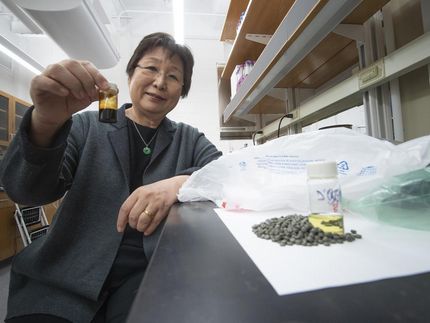Product Innovation Expands Applications of Thermoplastic Polymers
In a market teeming with participants and products, thermoplastic polymer manufacturers have taken to product innovation in a big way to tap new markets and find fresh sources of revenue. Innovative biodegradable polymers (BDPs) made of renewable raw materials and special grades of reinforced compounds are making their way into the manufacturing processes for environmentally-friendly electronic notebook housing and packaging of silicon chips, and enterprising BDP manufacturers are moving out of the confines of food packaging, agricultural film and other small-scale applications to the electronics market. These innovations and market expansions are likely to see them grow at a double-digit growth rate to generate more than $525 million by 2009.
New grades of liquid crystal polymers (LCPs) are also finding uses in the electronics market such as for production of lens holders for optical pick up parts in CD-ROM and DVD drives, creating additional streams of revenue for the $249.3 million market. Manufacturers of cyclic olefin copolymers (COC) are exploring fresh possibilities by developing improved impact- and heat-resistant products for light-guide plates in LCDs and automobile headlamp parts. This market is expected to grow at a compound annual growth rate of 3.8 per cent to finish at $59.8 million in 2009.
The $116-million polyketone (PK) market is set to witness a boom with 249 new applications being commercialised in six months by 31 March 2003 and another 1,380 projects in the pipeline. Injection moulding is the new buzzword in the market, although film extrusion and blow moulding uses are not lagging far. The electrical and electronics vertical has opened up exciting possibilities for PK in the manufacture of critical materials designed to transport and protect microchips and electronics. There is also a surge in demand from energy-related applications and medical devices.
By establishing production units in new geographical markets - especially Asia - market participants are hoping to increase sales as well as capitalise on the lower labour costs. Major multinational companies are seeking a presence in all three major world regions (Asia Pacific, North America and Europe) to expand their global marketing reach.
While established participants are making strong gains, entrants are being compelled to strike up licensing agreements with recognised suppliers to gain a toehold in these developing polymer markets. This method is preferable to the costlier options of acquisition or development of a new business.
Brian Balmer, Industry Analyst from Frost & Sullivan (http://chemicals.frost.com), points out, "Selecting the right company to partner with as an entrant is important to not only boost sales of products but also drive awareness. It also helps to own an excellent and growing repertoire of versatile products. Partnerships and alliances have helped relax the stranglehold of a few multinationals on the industry and made it easier for the smaller companies to compete."
Entry of more participants is likely to lead to greater price competition, stimulating further application development. By constantly introducing new polymers or compounds/composite materials, the developing thermoplastic polymer market is set to thwart competition from traditional materials manufacturers.
Originality in product design and features and the superiority of performance are expected to help polymer companies distinguish themselves from competitors. For instance, the COC market has developed disposable insulin pens that enable diabetics to deliver their own medication safely and quickly. Such 'smart' devices not only raise the bar on innovations in drug delivery systems but are also vital product differentiating factors.
The numerous advantages of the innovative polymers over competing products notwithstanding, high costs are restricting mass uptake. To make inroads into mass market applications, companies will have to slash prices considerably, especially since the costs of commodity plastics have fallen drastically.
"Various challenges including high costs and a crowded marketplace limit the wider acceptance of innovative polymers in large-scale applications," notes Balmer. "Producers are remedying the situation by continuously improving the property profile of their products, leading to greater market growth."
Most read news
Topics
Organizations
Other news from the department business & finance
These products might interest you

Eclipse by Wyatt Technology
FFF-MALS system for separation and characterization of macromolecules and nanoparticles
The latest and most innovative FFF system designed for highest usability, robustness and data quality

Spinsolve Benchtop NMR by Magritek
Spinsolve Benchtop NMR
Spinsolve is a revolutionary multinuclear NMR spectrometer that provides the best performance

HYPERION II by Bruker
FT-IR and IR laser imaging (QCL) microscope for research and development
Analyze macroscopic samples with microscopic resolution (5 µm) in seconds

Get the chemical industry in your inbox
By submitting this form you agree that LUMITOS AG will send you the newsletter(s) selected above by email. Your data will not be passed on to third parties. Your data will be stored and processed in accordance with our data protection regulations. LUMITOS may contact you by email for the purpose of advertising or market and opinion surveys. You can revoke your consent at any time without giving reasons to LUMITOS AG, Ernst-Augustin-Str. 2, 12489 Berlin, Germany or by e-mail at revoke@lumitos.com with effect for the future. In addition, each email contains a link to unsubscribe from the corresponding newsletter.



























































